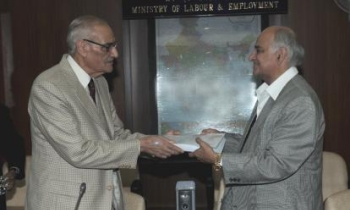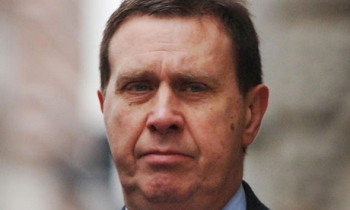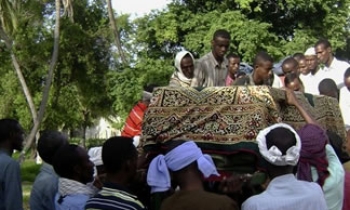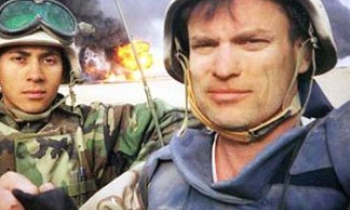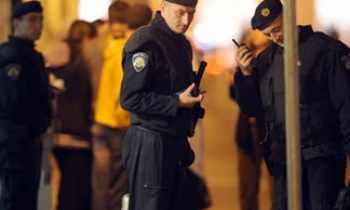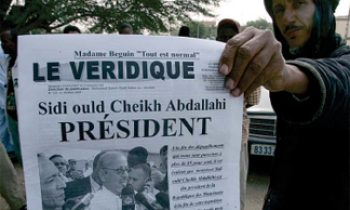COPENHAGEN, Feb. 2 – As a Danish citizen of Pakistani descent, a onetime television anchor and now a prominent author married to a Dane, Rushy Rashid has led what could be depicted as a high-profile life.
But, she said, nothing has forced her to define her attitude to fellow Muslims quite so much as Denmark's bitter dispute with much of the Islamic world over a newspaper's decision to print unflattering cartoons depicting the Prophet Muhammad – a dispute that has spread to many other European countries.
"For the first time I feel I have to stand up as a Muslim," she said in an interview on Thursday, referring to her concern that the voice of Denmark's 200,000 Muslim immigrants – a small minority in a land of 5.4 million – has been monopolized by what she depicted as a minority led by radical imams with ties in the Middle East.
"Up to now I have stood up as a woman, as a journalist, as a writer," she added. "But for the first time I have to stand up and say I don't like what's happening. I don't approve of the fact that one group of Muslims talk for the whole community."
Her sentiments reflected the nuances of immigrant societies across Europe, where the cartoons have produced raw anger among some and more complex feelings among others like Ms. Rashid.
Indeed, for those in the second and third generations of immigrants, the debate seems once again to have evoked the dual tug of parental homelands and adopted places, pitting faith against newer, secular loyalties.
When Palestinians burned the Danish flag in Gaza this week to protest the cartoons, Ms. Rashid said, "I was crying because it really hurt."
She said: "We live in this country. This is where our children will grow up. We have a responsibility for this country."
At the same time, she felt pulled to the argument of those who published the cartoons, that this was an issue of Denmark's vaunted freedom of expression, which has been possibly the most entrenched in Europe. Her support, though, was qualified.
"I will fight in the name of free speech," she said, "but not without respect for the consequences. Even if this freedom of speech is very broad, it is not unlimited. You have limits where your morals come in."
When she saw the cartoons first published here in September and republished in France, Germany, the Netherlands, Italy and Spain on Wednesday, Ms. Rashid, 37, said she asked herself, "Why is it necessary to provoke like this?"
"I have been brought up in the faith of Islam and you don't make pictures of the prophet," she said. "But when you decide to do that, you should show more respect. You cannot make a fool of someone who means much to so many people around the world."
Her remarks reflected a broader soul-searching – and perhaps some second thoughts – in Denmark as protests against the cartoons spread Thursday across the Islamic world, from the Middle East to North Africa, Indonesia and Pakistan.
Indeed, there have been threats of unaccustomed violence, unsettling many in this tranquil outpost of northern Europe, not least Carsten Juste, editor in chief of the newspaper Jyllands-Posten which first published the cartoons.
"If I had known that the lives of Danish soldiers and civilians would be threatened," Mr. Juste said, "if I had known that, as my finger hovered one centimeter above the send button for publishing the drawings, would I have hit it? No. No responsible editor in chief would have done."
Yet, the cartoons have come to be a milestone, for immigrants and their Lutheran hosts alike.
Tim Jensen, a professor of the study of religions at the University of Southern Denmark, said immigration began in the 1960's, was restricted in the 1970's and started up again in the 1980's as crises around the world sent refugees seeking safe havens.
"Denmark has been so remarkably homogeneous in terms of religion that the changes in the past 15 years have been as if they were something much bigger," he said in an interview.
With immigrants from Turkey, Pakistan, the Arab world, Afghanistan, Iran and, most recently, Somalia, he said, "There has been a very marked xenophobia and Islamophobia, not only because of Sept. 11, 2001. That was just the culmination."
Politically, this is shown in the rise of the right-wing Danish People's Party, which holds 13 percent of the seats in Parliament and whose support is vital for the survival of the coalition government.
In one way, Professor Jensen said, the dispute over the cartoons may help Muslims.
"They have managed to prove that they want to be respected," he said. "They don't want to be second-class citizens. They don't want people to say just what they like about Muslims." Indeed, after the publication of the cartoons, there is talk – some of it divisive – of spending public money on a grand new mosque to show Danes' respect for Muslims.
At the Betty Nansen Theater here, a show running since last month titled "The Headscarf Monologues" seeks to explore the experience of 80 Muslim women living in Denmark, distilled into 18 monologues.
One speech, said Anne Marie Helger, one of three actors in the show, reflects the experience of an unidentified Iranian woman who came to Denmark from Tehran to escape religious pressure in the 1980's, only to discover that, in Copenhagen, "she is insulted on the street as an immigrant."
Some monologues, said Vibeka Bjelke, the show's director, discuss anger among non-Muslim immigrants at Muslim counterparts who do not wish to abandon their Islamic roots and traditions in favor of social integration.
"It's a picture of the discussion going on among women," she said. In making the show, she said, "we have all been confronted with prejudices we did not know we had."



